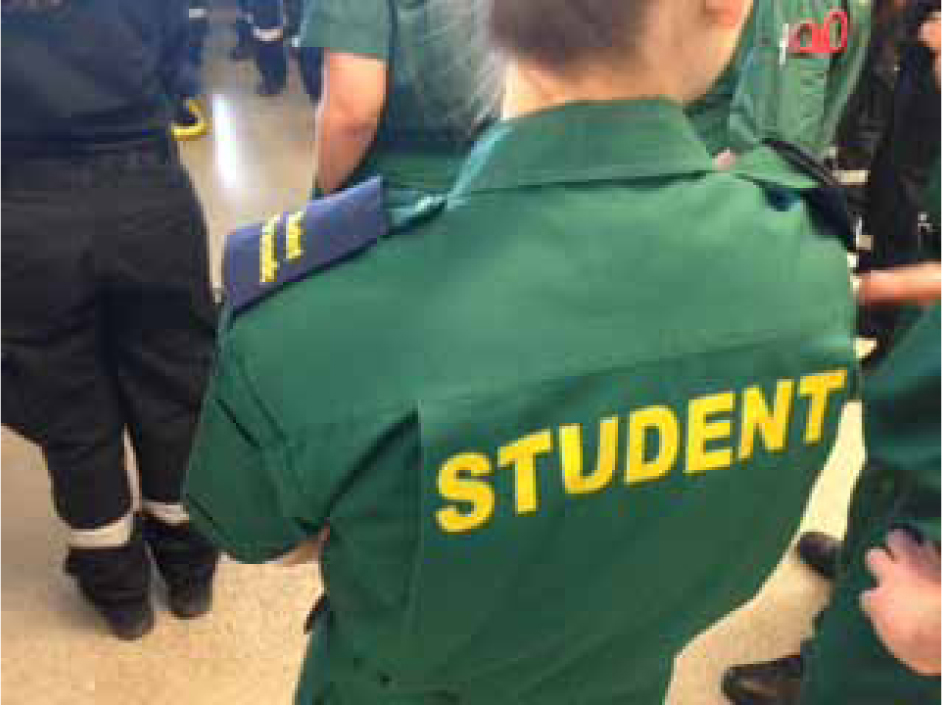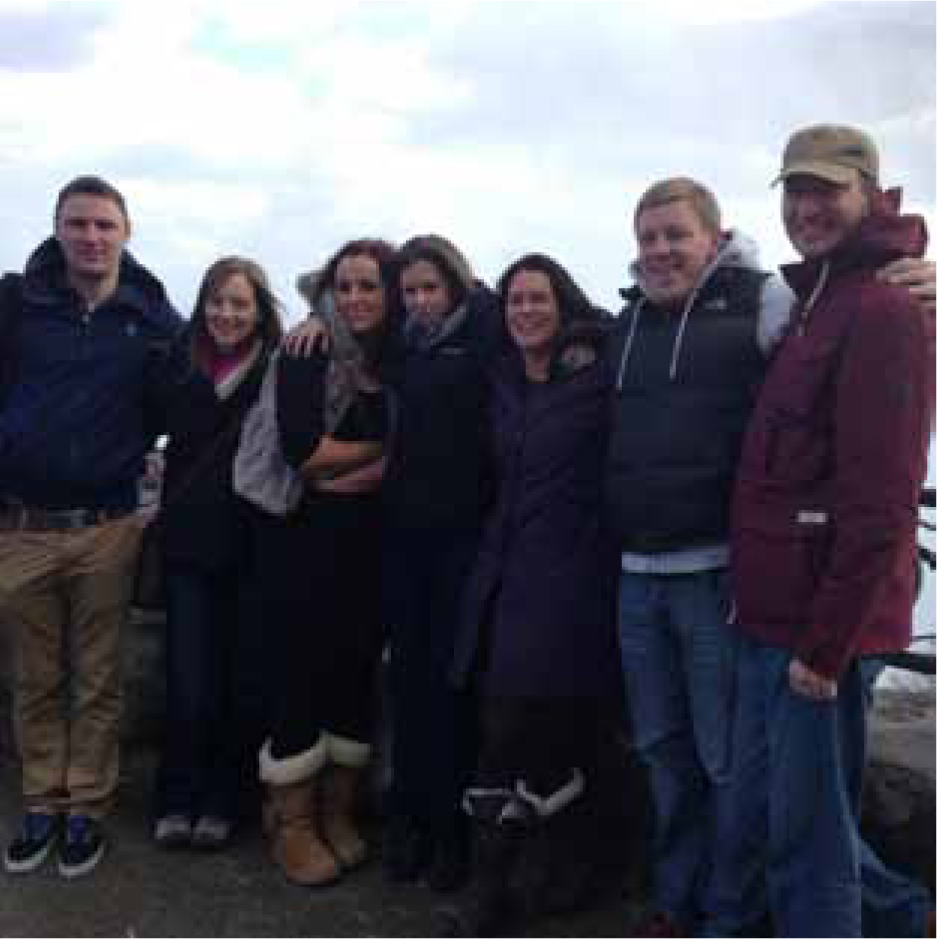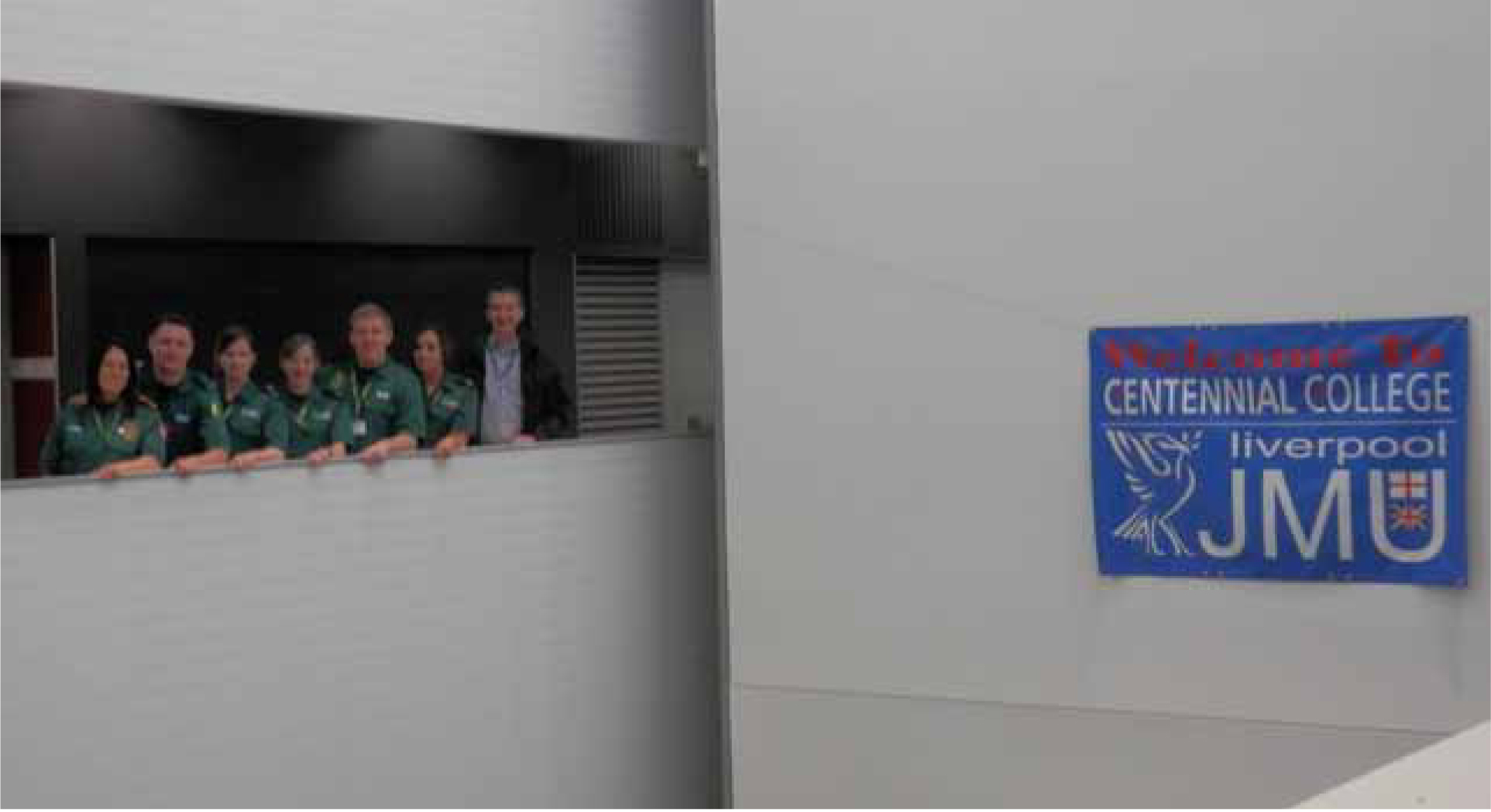In 2009, an international student exchange was developed between Liverpool John Moores University (LJMU) and Centennial College of Ontario, Canada for students in the second year of the Paramedic Practice course at both institutions. The exchange runs on an annual basis, allowing students to gain international experience of their chosen career.
In November 2012, eight students from Centennial College arrived in Liverpool as part of the exchange programme. During their time in Liverpool, the students attended lectures at LJMU, undertook two shifts observing the local ambulance service, and spent a day with the local Coastguard, as well as meeting the Lord Mayor of Liverpool. A student conference was also held at LJMU exploring the concepts of mindfulness, the use of mobile technology within the out-of-hospital setting and the history of the North West Ambulance Service NHS Trust.
In March 2013, six LJMU students were fortunate enough to travel to Toronto to experience outof-hospital care in Canada. While there, students were able to spend two shifts observing on ambulances, take a tour around a hospital and take part in a mass casualty incident (MCI) run by Centennial College, alongside many other fantastic opportunities.
As a result of this exchange opportunity, students from both institutions have compiled a review article of their experiences of the exchange programme. It is hoped this article will promote the concept of international student exchange for paramedic students.
The Centennial view
The students who took part in the exchange are aware of the barriers and obstacles in place, which make the transfer of paramedic qualifications and experience overseas exceptionally difficult. This is predominantly due to differences in legislation and the medical directives in which paramedics are governed. As the UK paramedics differ from their Canadian counterparts in that they each have their own paramedic registration, it makes the prospect of experiencing what it is like to work for the UK ambulance service challenging to facilitate.
Fortunately, through the joint partnership between Liverpool John Moores University, UK and Centennial College, Toronto, the paramedic students who study at these institutions have been able to experience what it is like to work in one another’s country. A sample of Canadian students have been inspired to tell others about their visit to Liverpool, in the hope that they can highlight the benefits of the exchange and promote our profession and the organisations they belong to.
From the commencement of the paramedic programme at Centennial College, the importance of global citizenship is emphasised. This portion of the programme helped prepare the students for the international exchange by making the cohort aware of their responsibilities not only to themselves, but to others near and far. By emphasising the importance of global citizenship, the programme prepared the students for the visit and encouraged them to keep an ‘open mind’ with respect to learning and observing alternative techniques and practice.
‘The students concluded that they should observe the sportsmanship displayed on the pitch and apply this to how paramedics work together on the road’
When the students reflect on exchange, they say it is difficult to agree on specific highlights from the fast-paced 10 days they spent in Liverpool. Once they had managed to figure out which way to look when crossing the street, they were very excited to have the opportunity to do two shifts with the local ambulance Service. The students were surprised by the volume of calls and, although the expression ‘paramedic burn out’ came to mind, the students reported this was far from evident, as every member of staff they encountered was very enthusiastic and committed to their patients and their role.
Another eventful and unique day spent in Liverpool was visiting the Coast Guards. The students had the opportunity to meet the brave men and women that devote their spare time to such a dangerous job. Although the students took some persuading to enter the freezing water for several training exercises, it turned out to be one of the most memorable moments of the trip. Lots of laughs were shared, lots of ‘patients’ were saved, and the memories they shared will live on for a lifetime.
During the visit to the emergency call centre, the students found it interesting that the call handlers were in touch with the medics on the road. This is something they agreed they would like to see in Canada with emergency dispatch, and also in the overall community of emergency response workers. Just like the beloved game of football in Liverpool (soccer for the Canadian folks), the students concluded that they should observe the sportsmanship displayed on the pitch and apply this to how paramedics work together on the road. This sense of kinship and community was also evident during the students’ VIP visit to watch the local football club Everton FC, and allowed them to see first-hand the world-renowned passion for the game.


As second year paramedic students at Centennial College, the students are coming to the end of their school journey and are about to embark on their professional careers. The students who took part realise how fortunate they are to have been included in this invaluable opportunity. They each returned with a new skillset, which they can apply in their future roles: the ability to adapt to any environment, work alongside many different personalities, as well as thrive in a multicultural city like Liverpool.
‘Taking part in the exchange demonstrates to potential employers that they are invested in their profession and have great ambition to broaden their understanding of what it means to be a paramedic’
In addition, the students realise the international exchange has made them more employable. Taking part in the exchange demonstrates to potential employers that they are invested in their profession and have great ambition to broaden their understanding of what it means to be a paramedic, by exploring the profession in another country.

The Liverpool John Moores view
The highlight of the exchange for most students was taking part in observer shifts with the Toronto, Peel and York emergency medical services (EMS) paramedics. The students found these ‘rideouts’ (the equivalent of our placements) interesting to see in what ways the Canadian services and responsibilities are different from our own in the National Health Service, and in what ways they are similar. The students found that staff were informing, welcoming and were willing to answer any questions they had regarding their treatment decisions and use of skills and drugs.
Although no actual new skills were learned during the time in Canada, the students involved were able to take knowledge of the healthcare systems of each country and compare and contrast them. They were also able to see how the skills of UK paramedics compare to the skillset of the paramedics in Canada.
The Canadians also seemed to be facing similar challenges to the UK as an ambulance service in regards to the streamlining of services; however, this was not evident, as their training facilities and equipment available looked to have had no expense spared.
There were some subtle differences, such as more skills within their service, which included rapid sequence intubation, continuous positive airway pressure (CPAP) and different ranges of drugs used.
No actual difference in type of patients visited was noticed as such; however, they definitely did not have the same call volume that is responded to by the North West Ambulance Service NHS Trust. This could definitely be recognised as a cultural difference between the two populations. Although two days of attending shifts was enjoyable, it would have been beneficial to spend more time alongside crews to gain a complete picture of their call types and volumes. Perhaps if the exchange expands in the future this would be something for the faculties and other students to consider.
A further highlight for the students was the opportunity to meet with the medical director of one of the regional ambulance services in Ontario. During the time meeting Dr Cheskes, he discussed three different pre-hospital research trials that are currently taking place in the region. It was fantastic to hear about the trials and the practical aspects of how they are undertaken in the pre-hospital environment.
The way out-of-hospital research is conducted was engaging, and something that should be looked into in the UK as it could be used to improve the services patients receive in the future. Students with a keen interest in clinical research found the interaction with Dr Cheskes beneficial, and it also sparked further attraction to students who had previously been ambivalent regarding research in the out-of-hospital field.
During the time spent with Centennial College, students participated in a mass casualty incident (MCI) scenario involving more than 30 patients. Again, this was of great benefit to the students as it is something that they had no experience of dealing with on such a scale. As a result of the MCI, students are now looking to organise a similar simulation at LJMU to share the experience with fellow colleagues.
Aside from that, students also enjoyed visiting St. Michael’s Hospital (and particularly the helipad) to see some of the state-of-the-art facilities, as well as meeting the staff and patients at the medical centre and getting a general tour of some of the acute medical units. In particular, students enjoyed the tour of the trauma room, where they were able to see it in use when a real trauma standby was brought in.
The similarities between UK and Canadian services were evident, such as the similar trauma pathways used by both services. Also, it seems that Canada are moving in a similar direction to the UK, with more emphasis on community-based care, although currently they do not have protocols like paramedic pathfinder tools. However, discussing the topic with students and road staff revealed that they appear to be moving toward something similar.
Of course, the exchange was not all about work. Students had four free days, allowing them to explore the local area. As a group, students went on a tour to Niagara Falls, taking a helicopter flight over the Falls themselves, which was a fantastic experience. Students also visited the CN tower and Toronto Islands, as well as going to watch a baseball, basketball and an ice hockey game.
The exchange has definitely yielded many benefits. It has prompted students to consider how they could improve their own practice, as well as looking deeper into issues surrounding pre-hospital research and the challenges and barriers faced when trying to implement a study. Students have also seen that it may be possible to use their skills to work overseas as a paramedic in the future.
However, one of the most important points to come from the exchange was meeting the future of the ambulance service of Canada, the students of Centennial College. The exchange is so valuable to create those links and improve our services by sharing ideas, knowledge and experience. The links and bonds made with the students are something to be carried forward for the future and hopefully will bring about closer working relations between nations and services, further improving our education of the future and the quality of care we offer service users.
Conclusions
The international student exchange programme is a fantastic opportunity to allow students from both countries to gain a greater understanding and appreciation of an international healthcare system. Students have been able to compare current practice within the out-of-hospital environment between both countries, highlighting both similarities and differences between the two healthcare systems. It is clear that as a result of the exchange programme, strong international relationships have been developed.
Students from both institutions have returned with valuable experiences, which will ultimately enhance their clinical practice, as well as aid them in their future careers. Both LJMU and Centennial are committed to ensuring this exchange continues and the strong links already forged continue to thrive and expand long into the future.
A companion article on the benefits of participating in collaborative exchange programmes written by Paul Jones, senior lecturer in paramedic practice at Liverpool John Moores University, and Wendy McGillis, professor at Centennial College, can be found in International Paramedic Practice, Volume 3, Issue 2.
